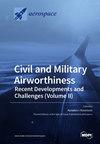基于离散元法的冰冻月球土壤取样温度预测
IF 2.1
3区 工程技术
Q2 ENGINEERING, AEROSPACE
引用次数: 0
摘要
这项研究是中国嫦娥七号工程前期研究的一部分。嫦娥七号工程计划利用螺旋槽结构钻穿月球极地土壤并采集月球土壤样本。月球极地寒冷环境中的冰是采样的重要目标之一。在月球表面的真空环境中,冰土样品对环境温度非常敏感,随着温度的升高容易发生固-气相变化。为了预测月球土壤样品的温度范围,本研究利用离散元模拟分析了热参数对月球土壤颗粒和钻头温升的影响。热效应分析的参数包括钻具和月壤颗粒的导热系数和比热容。模拟结果表明,在热参数设置范围内,螺旋槽中冰质月壤样品的温度在-127.89 ℃至-160.16 ℃之间。该值的大小与月壤颗粒的导热系数和比热容呈负相关,与钻具的导热系数和比热容呈正相关。钻头的温度变化范围为 -51.21 至 -132 °C。该值的大小与月壤颗粒的导热系数和比热容以及钻具的导热系数呈正相关。本文章由计算机程序翻译,如有差异,请以英文原文为准。
Temperature Prediction of Icy Lunar Soil Sampling Based on the Discrete Element Method
This study is part of the preliminary research for the Chang’e 7 project in China. The Chang’e 7 project plans to drill to penetrate the lunar polar soil and collect lunar soil samples using a spiral groove structure. Ice in the cold environment of the lunar polar region is one of the important targets for sampling. In the vacuum environment of the lunar surface, icy soil samples are sensitive to ambient temperature and prone to solid–gas phase change as the temperature increases. To predict the temperature range of lunar soil samples, this study analyzed the effect of thermal parameters on the temperature rise of lunar soil particles and the drill using discrete element simulation. The parameters included in the thermal effect analysis included the thermal conductivity and specific heat capacity of the drilling tools and lunar soil particles. The simulation showed that the temperature of the icy lunar soil sample in the spiral groove ranged from −127.89 to −160.16 °C within the thermal parameter settings. The magnitude of the value was negatively correlated with the thermal conductivity and specific heat capacity of the lunar soil particles, and it was positively correlated with those of the drilling tools. The temperature variation in the drill bit ranged from −51.21 to −132 °C. The magnitude of the value was positively correlated with the thermal conductivity and specific heat capacity of the lunar soil particles and the thermal conductivity of the drilling tool.
求助全文
通过发布文献求助,成功后即可免费获取论文全文。
去求助
来源期刊

Aerospace
ENGINEERING, AEROSPACE-
CiteScore
3.40
自引率
23.10%
发文量
661
审稿时长
6 weeks
期刊介绍:
Aerospace is a multidisciplinary science inviting submissions on, but not limited to, the following subject areas: aerodynamics computational fluid dynamics fluid-structure interaction flight mechanics plasmas research instrumentation test facilities environment material science structural analysis thermophysics and heat transfer thermal-structure interaction aeroacoustics optics electromagnetism and radar propulsion power generation and conversion fuels and propellants combustion multidisciplinary design optimization software engineering data analysis signal and image processing artificial intelligence aerospace vehicles'' operation, control and maintenance risk and reliability human factors human-automation interaction airline operations and management air traffic management airport design meteorology space exploration multi-physics interaction.
 求助内容:
求助内容: 应助结果提醒方式:
应助结果提醒方式:


